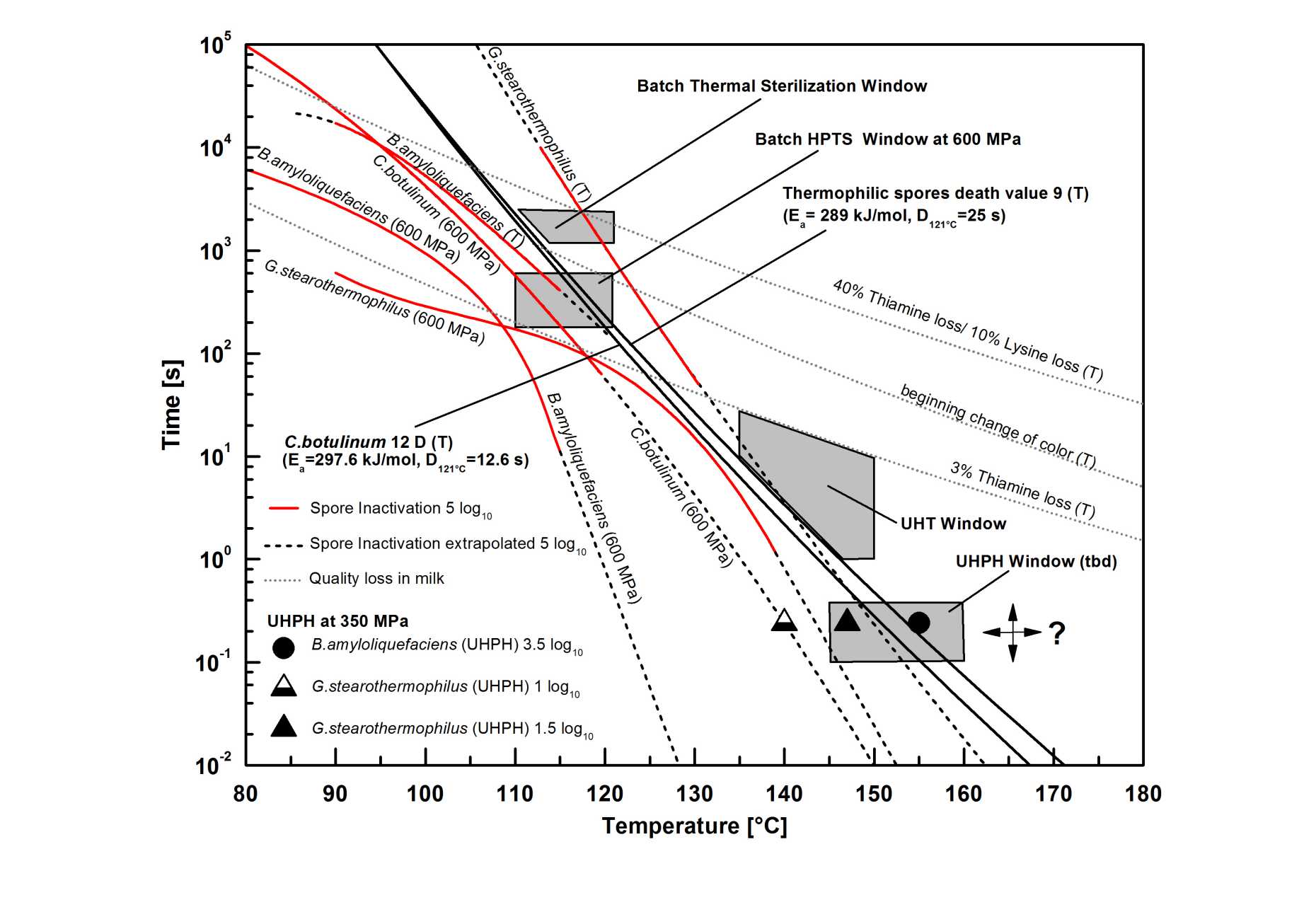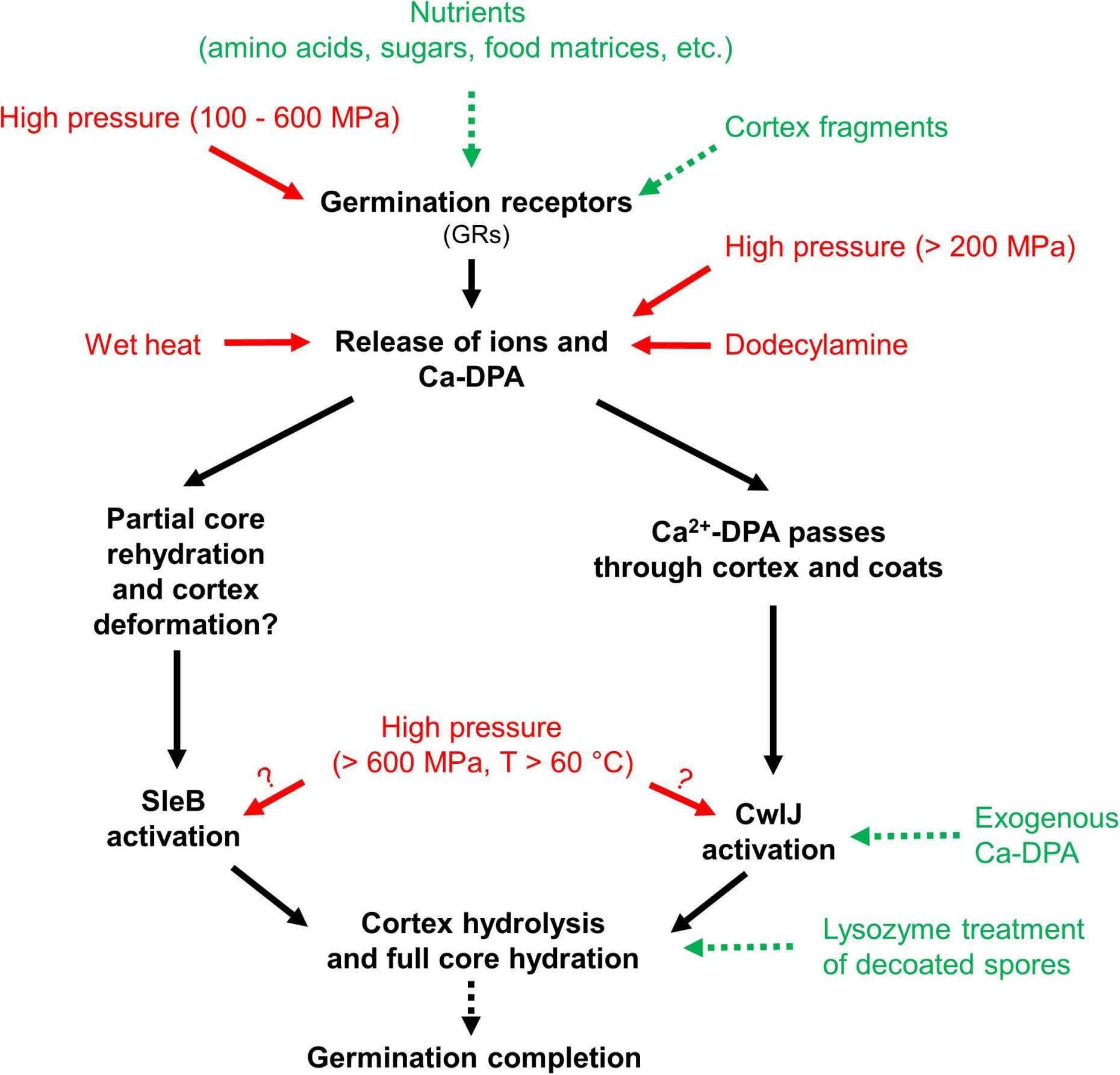High Pressure Thermal Sterilization

High-pressure thermal sterilization (HPTS) and ultra-high-pressure homogenization (UHPH) are two emerging sterilization techniques that have not been implemented in the food industry yet. The two technologies apply different acting principles as HPTS uses isostatic pressure in combination with heat whereas UHPH uses dynamic pressure in combination with shear stress, cavitation, impingement, and heat. Both technologies offer significant benefits in terms of spore inactivation in food production with reduced thermal intensity and minimized effects on sensory and nutritional profiles. These benefits have resulted in relevant research efforts on both technologies over the past few decades. This state of the art of the discontinuous HPTS-based and the continuous UHPH-based sterilization concepts are assessed within this review. Further, various basic principles and promising future preservation applications of HPTS and UHPH for food processing, that are also applicable in the pharmaceutical, biochemical, and biotechnological sectors, are summarized. In addition, the applications and limitations of these technologies in terms of optimizations needed to overcome theidentified challenges are emphasized.
In the 2nd figure, an overview of germination stimuli and proposed germination pathways of Bacillus subtilis spores is shown. Stimuli that lead to germination are shown as green with dashed arrows and stimuli that lead to germination and possible inactivation are shown as red with solid arrows.
Selected publications
Sevenich, R. & Mathys, A. 2018. Continuous versus discontinuous Ultra‐High‐Pressure systems for food sterilization with focus on Ultra‐High‐Pressure Homogenization and High‐Pressure Thermal Sterilization: a review. Comprehensive Reviews in Food Science and Food Safety 17(3), 646-662. external pageDOIcall_made
Zhang Y. & Mathys A. 2019. Superdormant spores as a hurdle for gentle germination-inactivation based spore control strategies. Frontiers in Microbiology. 9:3163. external pageDOIcall_made
Delbrück, A. I., Zhang, Y., Heydenreich, R. & Mathys, A. (2021). Bacillus spore germination at moderate high pressure: A review on underlying mechanisms, influencing factors, and its comparison with nutrient germination. Comprehensive Reviews in Food Science and Food Safety. external pageDOIcall_made
Delbrück, A. I., Zhang, Y., Hug, V., Trunet, C. & Mathys, A. 2021. Isolation, stability, and characteristics of high-pressure superdormant Bacillus subtilis spores. International Journal of Food Microbiology, 343- 109088. external pageDOIcall_made
Zhang Y., Delbrück A.I., Off C.L., Benke S. & Mathys A. 2020. Flow Cytometry Combined with Single Cell Sorting to Study Heterogeneous Germination of Bacillus Spores under High Pressure. Frontiers in Microbiology, vol. 10, pp. 3118 . external pageDOIcall_made
Mathys A. 2018. Perspective of Micro Process Engineering for Thermal Food Treatment. Frontiers in Nutrition 5: 24. external pageDOIcall_made
Dong P., Georget E., Aganovic K., Heinz V. & Mathys A. (2015).Ultra high pressure homogenization (UHPH) inactivation of Bacillus amyloliquefaciens spores in phosphate buffered saline (PBS) and milk. Frontiers in Microbiology, 6, 712.
Georget E., Kapoor S., Winter R., Reineke K., Song Y., Callanan M., Ananta E., Heinz V. & Mathys A. (2014).In situ investigation of G. stearothermophilus spore germination&inactivation mechanisms under moderate high pressure.Food Microbiology, 41, 8-18.
Georget E., Kushman A., Callanan M., Ananta E., Heinz V. & Mathys A. (2014).Geobacillus stearothermophilus ATCC 7953 spores chemical germination mechanisms in model systems. Food Control, 50, 141-149.
Georget E., Miller B., Aganovic K., Callanan M., Heinz V. & Mathys A. (2014).Bacterial spore inactivation by ultra-high pressure homogenization. Innovative Food Science and Emerging Technologies, 26, 116–123.
Georget E., Miller B., Callanan M., Heinz V. & Mathys A. (2014).(Ultra) high pressure homogenization for continuous high pressure sterilization of pumpable foods - a review. Frontiers in Nutrition, 1(15), 1-6.
Georget E., Sevenich R., Reineke K., Mathys A., Heinz V., Callanan M., Rauh C. & Knorr D. (2014).Inactivation of micro organism by high pressure processing in complex matrices:a review.Innovative Food Science&Emerging Technologies, 27, 1-14.
Reineke K., Mathys A., Heinz V. & Knorr D. (2013). Mechanisms of endospore inactivation under high pressure. Trends in Microbiology, 21(6), 296-304. DOI
Reineke K., Ellinger N., Berger D., Baier D., Mathys A., Setlow P. & Knorr D. (2013).Structural analysis of high pressure treated Bacillus subtilis spores. Innovative Food Science & Emerging Technologies, 17, 43–53.
Reineke K., Schlumbach K., Baier D., Mathys A. & Knorr D. (2013).The release of dipicolinic acid-The rate-limiting step of Bacillus endospore inactivation during the high pressure thermal sterilization process. Int.Journal of Food Microbiology, 162, 55-63.

